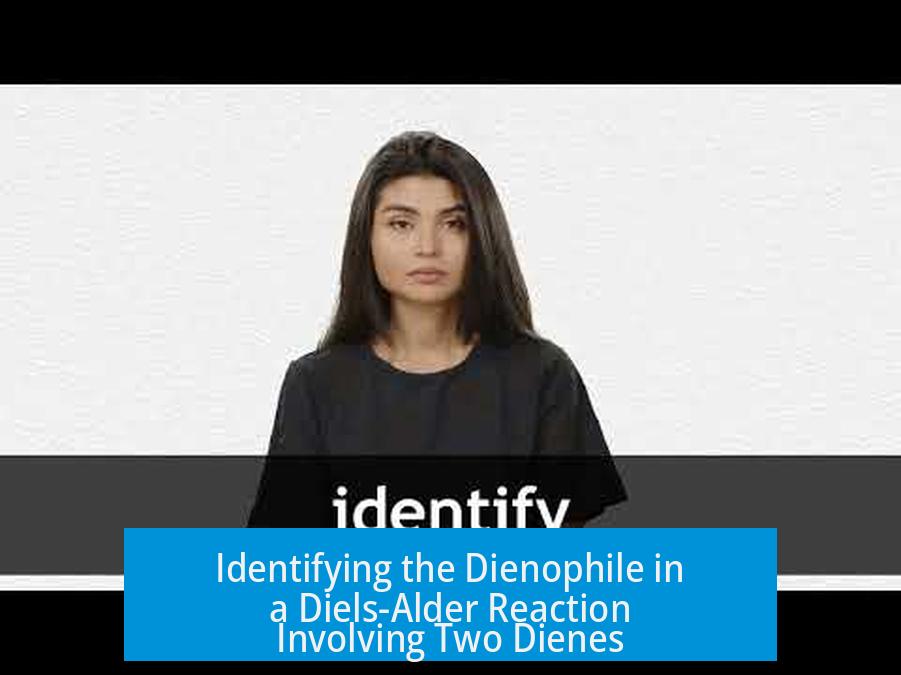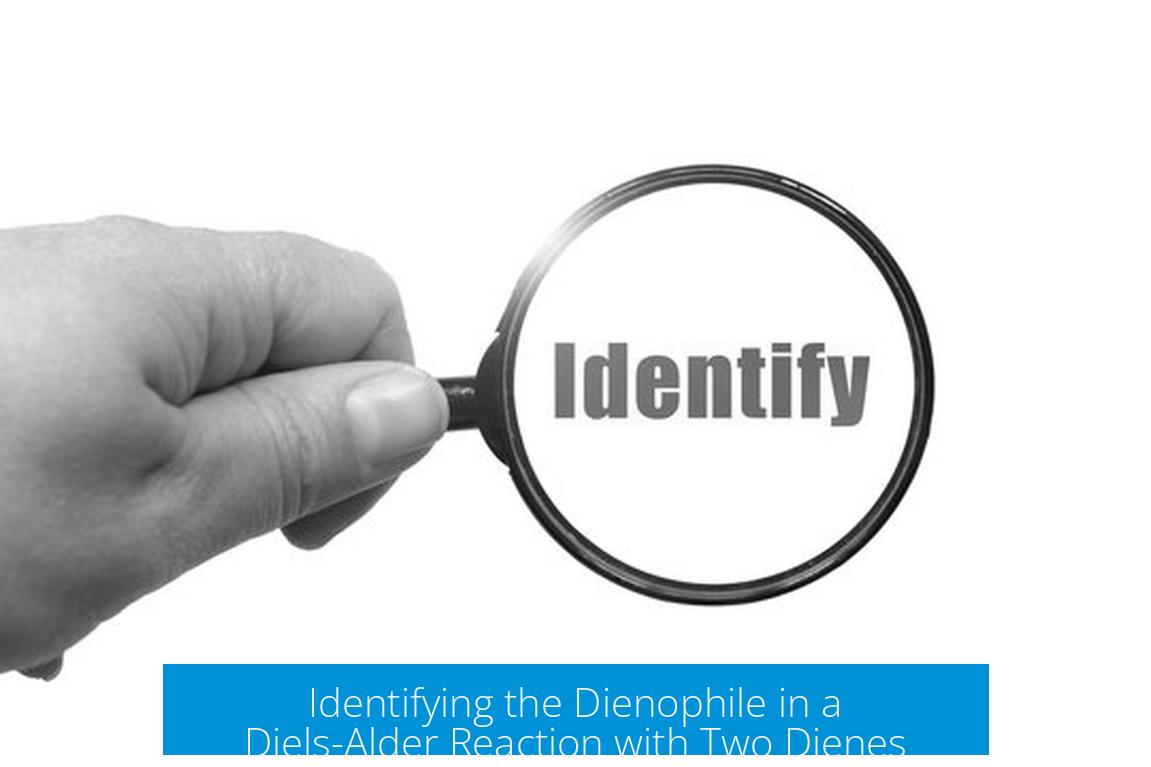Identifying the Dienophile in a Diels-Alder Reaction Involving Two Dienes

In a Diels-Alder reaction between two dienes, the dienophile is typically the more electron-deficient pi system, whereas the diene is the more electron-rich partner. This distinction is not absolute when both reactants are dienes; in such cases, either can act as the dienophile depending on their electronic properties.
Role of Electron Density in Determining Dienophile

Molecular Orbital (MO) theory guides the identification of dienophile and diene roles. The dienophile must be relatively electron-poor to attract the electron-rich diene.
- Dienes generally have conjugated double bonds rich in electron density, favoring their role as electron donors.
- Dienophiles often contain electron-withdrawing groups or are less electron-rich, encouraging reaction with the diene.
When two dienes such as furan and cyclopentadiene undergo reaction, the assignment depends on which molecule is more electron-deficient. Although furan is aromatic and typically electron-rich, it can behave as a dienophile when reacting with a more electron-rich diene like cyclopentadiene.
Complications When Both Partners Are Dienes
When neither partner is evidently electron-deficient, predicting the dienophile is more complex. Alternative approaches include analyzing biradical intermediates formed during the reaction.
By mapping the stability of biradicals on both partners, chemists can predict which combination forms the major product. This method often aligns with but may differ from MO theory predictions and requires computational or experimental validation.
Considerations for Furan as Dienophile
Furan can act as dienophile due to its heteroatom oxygen inducing partial electron deficiency despite its aromaticity. However, aromatic character tends to reduce a pi bond’s participation in Diels-Alder reactions. The balance depends on substituents and reaction conditions.
Summary Table: Factors Influencing Dienophile Selection
| Factor | Dienophile Characteristic | Diene Characteristic |
|---|---|---|
| Electron Density | Electron-deficient pi system | Electron-rich conjugated diene |
| Substituents | Electron-withdrawing groups (esters, aldehydes) | Electron-donating or neutral groups |
| Aromaticity | Less benzene-like, more reactive pi bonds | Conjugated, more reactive pi bonds |
Key Takeaways
- Either diene can act as dienophile depending on electron density.
- MO theory suggests dienophile is more electron-deficient pi system.
- Biradical intermediate analysis helps predict outcomes when both partners are dienes.
- Furan, while aromatic, may act as dienophile due to partial electron deficiency.
- Substituent type and aromaticity strongly influence reactivity roles.
1. In a Diels-Alder reaction between two dienes, which one acts as the dienophile?
Either diene can act as the dienophile since both have pi systems. Usually, the more electron-deficient diene functions as the dienophile, while the more electron-rich one acts as the diene.
2. How does molecular orbital theory help identify the dienophile in two diene reactions?
According to MO theory, the dienophile is the pi system that is more electron-deficient. The diene is the more electron-rich pi system. This electron difference guides their roles in the reaction.
3. What happens if both dienes have similar electron density and no clear dienophile?
In such cases, predicting the dienophile is tricky. One method is to consider biradical intermediates and match the least-stabilized radicals. This approach can help identify the major product when MO theory falls short.
4. Why is furan often considered the dienophile when paired with cyclopentadiene?
Furan tends to be more electron-deficient due to its oxygen atom and can act as the dienophile. Cyclopentadiene is relatively more electron-rich, so it usually acts as the diene in this pairing.
5. Does aromaticity affect a diene’s ability to act as a dienophile?
Yes. The more benzene-like (aromatic) a heterocycle is, the less likely its pi bonds participate as dienophiles. Aromaticity stabilizes the system, reducing its reactivity in the Diels-Alder reaction.





Leave a Comment